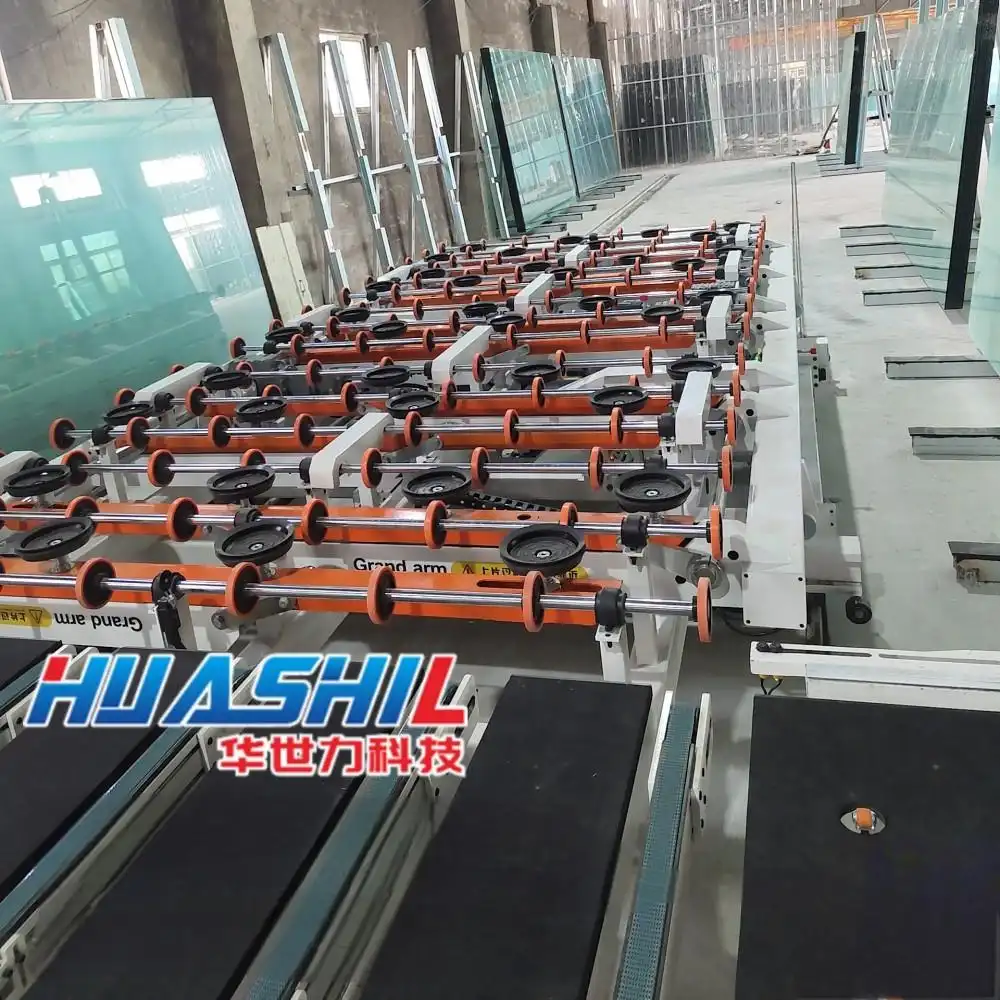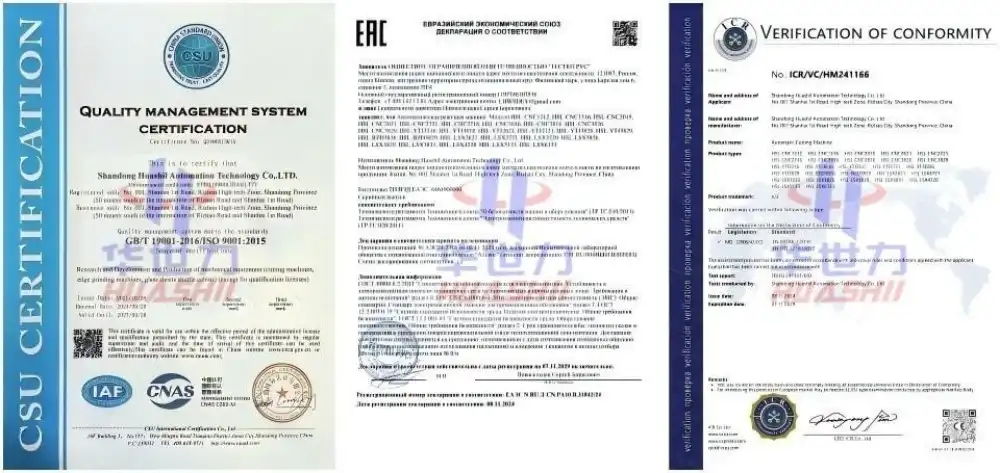Maintaining an automatic glass cutting line is essential for ensuring efficient production, high-quality glass products, and prolonged equipment lifespan. Proper maintenance not only prevents costly breakdowns but also optimizes performance and safety in glass manufacturing facilities. This guide explores key aspects of automatic glass cutting line maintenance, addressing common challenges and providing practical solutions.
What are the common issues with automatic glass cutting lines and how to prevent them?
Alignment and Calibration Problems
Alignment and calibration issues are among the most frequent challenges when operating an automatic glass cutting line. When cutting heads or conveyor systems become misaligned, cutting precision is compromised, resulting in irregular edges and increased waste. Regular inspection of alignment parameters is crucial for maintaining accuracy. Technicians should check the squareness of the cutting table, parallelism of cutting bridges, and perpendicularity of cutting tools weekly. Many modern automatic glass cutting lines have self-diagnostic systems that alert operators to alignment deviations. A comprehensive calibration check should be performed after every 500 hours of operation. Preventive measures include cleaning guide rails, lubricating moving parts according to manufacturer specifications, and ensuring stable environmental conditions to prevent thermal expansion issues.

Cutting Tool Wear and Replacement
Cutting wheels in an automatic glass cutting line gradually wear down over time. Signs of worn cutting tools include increased breakage during snap-off, poor edge quality, and inconsistent scoring depth. Operators should establish a regular inspection schedule for cutting tools, checking for signs like rounded edges, chips, or uneven surfaces. Most manufacturers recommend replacing cutting wheels after processing 5,000 to 10,000 square meters of glass, depending on thickness and type. Implementing a rotation system for cutting tools helps distribute wear more evenly. Maintain a log of cutting tool performance and replacement dates to establish patterns and optimize replacement schedules. Store spare cutting tools in dry, clean environments and follow manufacturer guidelines for installation when replacing them.
Software and Control System Maintenance
The software and control systems governing automatic glass cutting lines require regular maintenance. System crashes or communication failures between modules can halt production. Regular software updates are essential as they often contain bug fixes and performance improvements. Create backups of system configurations before updates to allow quick recovery if problems arise. Inspect electrical connections, sensors, and controllers regularly for wear, corrosion, or loose connections. Control cabinets require frequent cleaning to prevent overheating in dusty environments. Consider implementing a UPS system to protect sensitive electronics from power fluctuations. Training operators to recognize early warning signs of control system issues helps address problems before they escalate.
How do you optimize the efficiency of an automatic glass cutting line?
Regular Cleaning and Lubrication Protocols
Systematic cleaning and lubrication are fundamental to maximizing efficiency. Glass dust and cutting fluid residue can accumulate on critical components, causing friction and wear. Daily cleaning should focus on removing glass particles from conveyor belts, cutting surfaces, and positioning mechanisms. Compressed air systems can remove loose debris, but vacuum systems provide a safer alternative. The automatic glass cutting line requires appropriate lubrication based on manufacturer specifications – linear guides, ball screws, and gear systems need different lubricants at varying intervals. Over-lubrication can be as problematic as under-lubrication, attracting dust and creating abrasive pastes. Establish a detailed lubrication chart indicating which components need which lubricants and when. Some advanced automatic glass cutting lines feature automated lubrication systems that deliver precise amounts of lubricant to critical points.
Preventive Maintenance Scheduling
A well-designed preventive maintenance schedule is the backbone of efficient operation. Rather than reactive maintenance, preventive maintenance identifies and resolves potential issues before they impact production. Categorize maintenance tasks by frequency – daily, weekly, monthly, quarterly, and annual checks. Daily inspections include visual assessments of cutting quality and basic cleaning. Weekly maintenance involves checking belt tensions and pneumatic systems. Monthly tasks encompass more comprehensive inspections of mechanical and electrical systems. Quarterly maintenance includes calibration services and replacement of filtration systems. Annual maintenance often requires more extensive disassembly for thorough inspection. The automatic glass cutting line manufacturer's recommendations should form the foundation of this schedule, adapted to your specific operating conditions and production volume.
Performance Monitoring and Analysis
Robust performance monitoring provides valuable insights into the health and efficiency of an automatic glass cutting line. Modern cutting lines incorporate sensors that track performance metrics in real-time, including cutting speed, positioning accuracy, and cycle times. Establishing baseline performance metrics creates reference points for detecting gradual degradation. Key performance indicators such as Overall Equipment Effectiveness (OEE), glass yield rates, and defect percentages should be tracked consistently. Regular analysis can reveal patterns indicating developing issues – gradually increasing cycle times might suggest mechanical wear, while rising defect rates could indicate cutting tool deterioration. Some automatic glass cutting line systems integrate with production management software that generates automated reports highlighting deviations from expected parameters. Regular performance reviews involving operators, maintenance personnel, and production managers can foster a culture of continuous improvement.

What safety protocols should be followed when maintaining an automatic glass cutting line?
Lockout/Tagout Procedures
Implementing proper lockout/tagout (LOTO) procedures is essential when performing maintenance to prevent accidental startup or energy release. Before beginning maintenance work, all energy sources – electrical, pneumatic, hydraulic, and mechanical – must be isolated, locked out, and tagged. Each technician should apply their personal lock and tag to energy isolation devices. A comprehensive LOTO program includes documented procedures specific to each machine, identifying all energy sources and correct isolation methods. After completing maintenance, a systematic restoration process must be followed, including checking that all tools have been removed, guards reinstalled, and personnel safely positioned before removing locks. Regular audits of LOTO practices help identify procedural weaknesses and ensure compliance with safety regulations.
Personal Protective Equipment Requirements
Working with automatic glass cutting lines requires appropriate personal protective equipment (PPE). Cut-resistant gloves are essential when handling glass or sharp components. Safety glasses or face shields protect eyes from glass particles and debris. Hearing protection may be necessary in noisy environments. Safety footwear with reinforced toes protects against falling glass sheets. When working with cleaning chemicals or lubricants for the automatic glass cutting line, chemical-resistant gloves and respiratory protection may be required. Maintenance personnel should be trained in proper PPE selection, use, and inspection. Establish clear PPE zones around the automatic glass cutting line with appropriate signage. Remember that PPE represents the last line of defense – engineering controls and safe work practices should always be the primary methods of protection.
Emergency Response Training
Despite comprehensive preventive measures, emergencies can still occur. All technicians should be trained in basic first aid, particularly for injuries common in glass processing environments. Emergency shutdown procedures for the automatic glass cutting line must be clearly documented and regularly practiced. Evacuation routes should be clearly marked and kept unobstructed. Regular emergency drills help reinforce proper responses. Maintenance teams should know the locations of emergency equipment such as first aid kits, eye wash stations, and fire extinguishers. Communication procedures during emergencies should be established, including how to contact emergency services. After any incident involving the automatic glass cutting line, conduct a thorough investigation to determine root causes and implement corrective actions.

Conclusion
Proper maintenance of an automatic glass cutting line is essential for ensuring operational efficiency, product quality, and workplace safety. By implementing regular preventive maintenance schedules, addressing common issues promptly, optimizing performance through monitoring and analysis, and adhering to stringent safety protocols, glass manufacturers can maximize their equipment's lifespan and productivity. Regular investment in maintenance training and adherence to manufacturer guidelines will significantly reduce downtime and increase overall profitability in glass processing operations. Shandong Huashil Automation Technology Co., Ltd. is a leading provider in the glass machinery and mechanical equipment industry, offering high-quality products and comprehensive solutions. With over ten years of export experience, the company boasts a mature R&D team, a reliable source factory, and a professional after-sales service team. Huashil's core services include OEM support, fast delivery, high cost performance, and dependable after-sales service. The company holds complete certifications, ensuring the highest standards of quality and reliability. If you are interested in exploring our products or wish to establish in-depth cooperation, please feel free to contact us at salescathy@sdhuashil.com for more information.
References
1. Johnson, M. & Peterson, T. (2023). Best Practices for Glass Cutting Equipment Maintenance. Journal of Glass Processing Technology, 45(3), 112-125.
2. Zhang, L., Wang, H., & Kim, S. (2022). Predictive Maintenance Strategies for Automated Glass Processing Lines. International Journal of Industrial Automation, 18(2), 67-89.
3. Rodriguez, C. & Smith, B. (2024). Safety Protocols in Modern Glass Manufacturing Facilities. Industrial Safety Quarterly, 29(1), 34-52.
4. Thompson, R. (2023). Optimizing Cutting Tool Performance in Glass Processing Applications. Glass Industry Technical Review, 56(4), 203-218.
5. Chen, Y., Miller, K., & Patel, D. (2022). Energy Efficiency in Automatic Glass Processing Equipment. Sustainable Manufacturing Journal, 14(2), 94-107.
6. Williams, A. & Garcia, J. (2024). Industry 4.0 Implementation in Glass Cutting Automation. Digital Manufacturing Technology, 32(1), 76-91.



